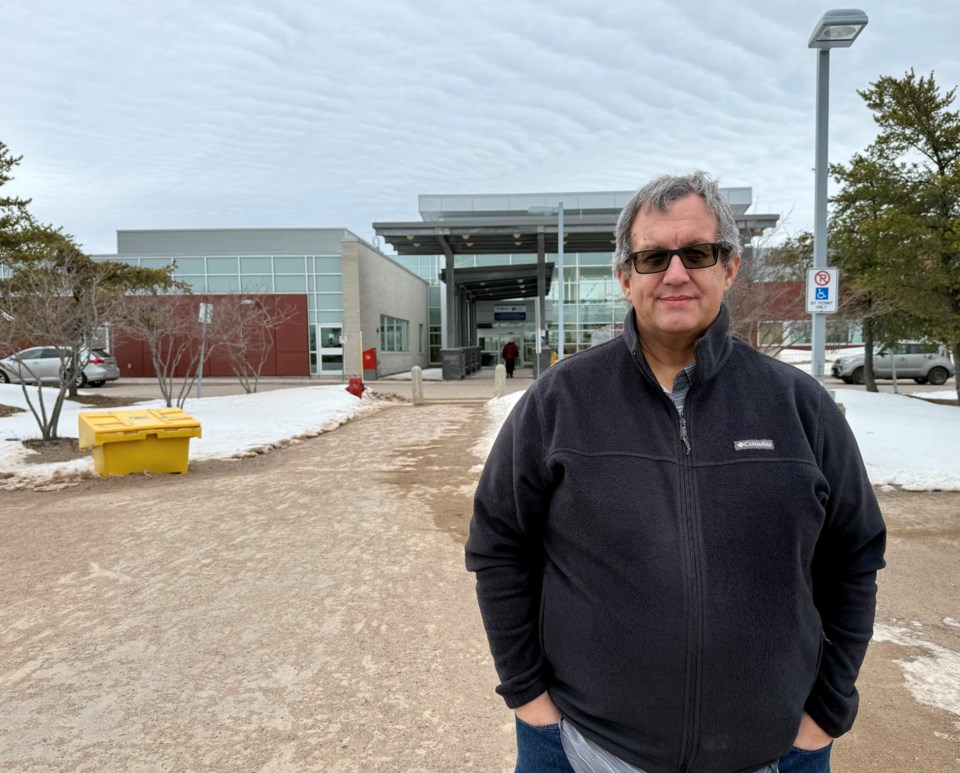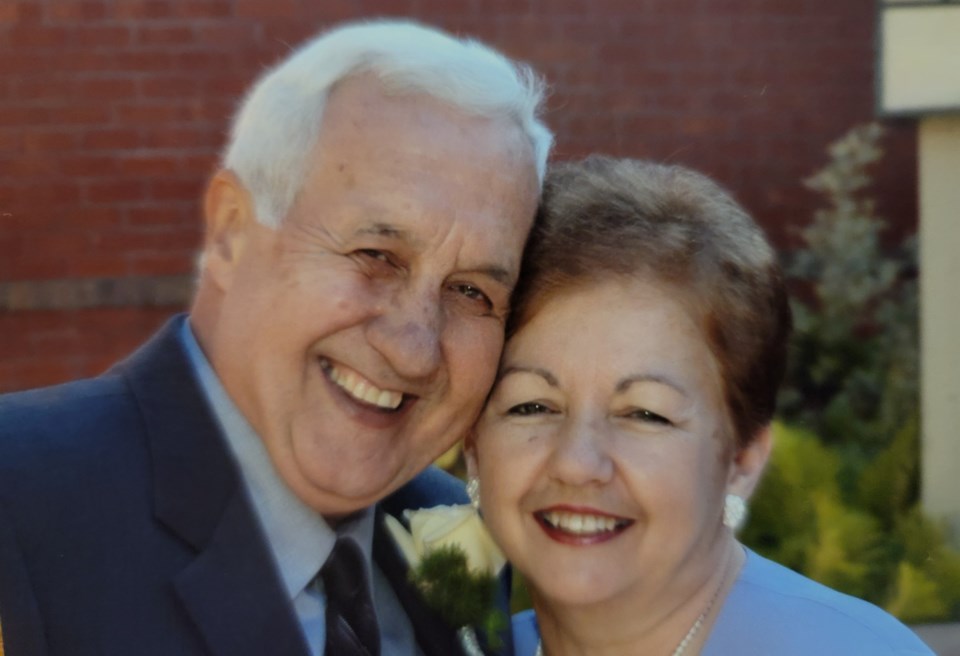When his elderly mother was admitted to Sault Area Hospital a couple years ago, Mike St. Eloi worried she would no longer be able to take care of herself.
Louise, then 79, had previously struggled at home, where she exhibited signs of mental decline while living with her sister. Mike wanted her to be reunited with her husband, Clarence – who was already a resident at F.J. Davey Home – so they could spend their remaining days together.
“My whole goal was to have my parents reunited before the inevitable,” Mike told SooToday. “Even if they had been together a week or a month, I would have been happier.”
That reunion would never happen.
After she took a fall and broke her arm on May 20, 2023, Louise never left the hospital again – despite her son's repeated attempts to have her referred to long-term care.
She ultimately died in the early hours of Jan. 2, 2024, concluding an emotional saga that, for Mike, stoked numerous frustrations with hospital staff and the long-term care referral process.
“Depressing, angering, feelings of helplessness – I thought I was in the place where I would get help,” he said.
After his mother passed away in the hospital’s care, Mike's father was not far behind. Sadly, he died a couple months later, in March 2024.
“He was caught way off guard when I went to tell him she had passed,” he said. “Once he found out, he started to let go.”
As his concerns and frustrations with hospital staff mounted, Mike kept track – in detail – of his experience trying to get his mother admitted to long-term care. He shared his documents with SooToday, hoping his parents' story may help improve the system and ensure other families don't endure the same heartache.

"There is a systemic problem within Sault Area Hospital that needs to be addressed," he wrote in one of his documents. "I am not the only person who has experienced this problem, and it will not resolve itself. Ignoring this problem has only made the situation worse."
Before Louise was admitted to the hospital, Mike said she had already begun exhibiting signs of decline. She had grown “very cautious,” he said, and would get upset about phone calls from numbers she did not recognize. Mike also noticed she had not been taking her medication.
After she was admitted to the hospital, her condition only worsened. Ultimately, Louise was diagnosed with Alzheimer’s disease, and her health records similarly state she had “moderate dementia.”
“Her short-term memory loss is getting worse … thinking she is no longer in Sault Ste. Marie, she's thinking she's in Mattawa, Ont., her hometown,” Mike told SooToday. “(She’s) beginning to think she's no longer in a hospital, but in a long-term-care home.”
“She wanted to be with my father. I have to keep explaining, every time, this is what I'm working on: ‘We're in Sault Ste. Marie. We're in the hospital in the Sault trying to get this process started.’”
Mike said he repeatedly advocated for hospital staff to begin the long-term-care referral process, but was told the plan for Louise was to undergo convalescent care, where she would heal, undergo rehabilitation, and ultimately return back home.
It was a plan, Mike said, that included no input from him. "Absurd," he wrote in one of his documents.
“No one had discussed with me my mother’s background information, the layout of my mother’s house, or my mother’s behaviour,” he said.
Given her condition, Mike had doubts about his mother’s ability to live independently, and hoped to see the hospital pursue long-term care.
In his documents, he described numerous interactions with hospital staff he found concerning, highlighting a “lack of consistent communication from various representatives,” especially given he had power of attorney over his mother’s affairs.
For instance, he said he was only made aware of his mother’s Alzheimer’s assessment from August after he was contacted in late-September to discuss potential medications to help manage the condition.
He also said he had trouble getting answers to direct questions about the long-term-care referral process – such as what criteria needs to be met for the hospital to begin the process through Home and Community Care – a question he never got the answer to.
“I asked several times to meet with my mother's care team. Never happened,” he said.
“I asked more than several times: what is the status of the referral to Home and Community Care? I always got pushed aside, blown off."
“It was just this attitude that we're handling this. We don't need to involve you.”
There were times, as well, where Mike felt staff grew impatient with him – recalling one conversation in which a staff member was “speaking as though she was frustrated with me and telling me what was to be done with my mother.”
After months of advocating, a referral for long-term care finally took place.
Although the hospital initially pushed for a return-to-home approach, on Nov. 30 – months after his mother arrived – Mike received a call that the long-term care referral process would begin due to his mother’s condition.
While Mike was told spousal reunification would move his mother up the list, Louise would ultimately pass away before she could be reunited with her husband.
“At Christmas, when we visited she was happy, but memory wise it wasn't good,” he said. “She didn't realize she was in the Sault. She really thought she was somewhere else. A week after Christmas, she was gone.”
In his documents, he raised frustration with the extended length of time it took for the referral process to begin, and he charted numerous occasions where he had difficulties learning what was required for a referral to take place.
When contacted by SooToday, Sault Area Hospital officials said they cannot comment on individual patients.
“Due to patient privacy and confidentiality, SAH is not able to comment on a specific patient’s care,” said Brandy Sharp Young, director of communications and public affairs.
“Sault Area Hospital works hard to ensure that our patients receive the right type of bed/care at the right time with the right providers.”
Young said long-term care eligibility and wait lists are managed by Ontario Health atHome.
“Awaiting long-term care placement from the hospital can vary in wait times and is only necessary when a patient cannot safely return home with community supports,” she said.
“Long-term care wait lists are based on long-term care bed availability and an individual’s selected options.”
Mike said his experience was not an isolated case – he’s since heard from others who have had difficulties navigating the long-term care system through the hospital.
“Once this was done, a connection through work told me of a very similar situation with extended family of hers in the Sault,” he said.
He’s also warned others of how the process might go.
“My son's roommate in university is from the Sault. His grandfather went through this, and I gave his daughter and son-in-law a heads up that this is what I've been dealing with,” he said.
“Sure enough, they said the same thing. They said thank you for giving us a heads up, because if it hadn't been for you, we would have been floored how we were about to be treated.”
The Ministry of Long-Term Care did not respond to requests for comment for this article.
